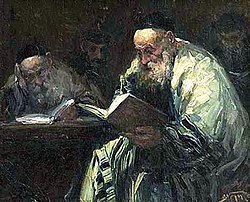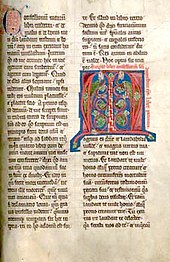 The Fall of the Western Roman Empire (also called Fall of the Roman Empire or Fall of Rome) was the process of decline in the Western Roman Empire in which it failed to enforce its rule, and its vast territory was divided into several successor polities. The Roman Empire lost the strengths that had allowed it to exercise effective control; modern historians mention factors including the effectiveness and numbers of the army, the health and numbers of the Roman population, the strength of the economy, the competence of the Emperor, the religious changes of the period, and the efficiency of the civil administration. Increasing pressure from barbarians outside Roman culture also contributed greatly to the collapse. The reasons for the collapse are major subjects of the historiography of the ancient world and they inform much modern discourse on state failure.[1][2]
The Fall of the Western Roman Empire (also called Fall of the Roman Empire or Fall of Rome) was the process of decline in the Western Roman Empire in which it failed to enforce its rule, and its vast territory was divided into several successor polities. The Roman Empire lost the strengths that had allowed it to exercise effective control; modern historians mention factors including the effectiveness and numbers of the army, the health and numbers of the Roman population, the strength of the economy, the competence of the Emperor, the religious changes of the period, and the efficiency of the civil administration. Increasing pressure from barbarians outside Roman culture also contributed greatly to the collapse. The reasons for the collapse are major subjects of the historiography of the ancient world and they inform much modern discourse on state failure.[1][2]
Relevant dates include 117 CE, when the Empire was at its greatest territorial extent, and the accession of Diocletian in 284. Irreversible major territorial loss, however, began in 376 with a large-scale irruption of Goths and others. In 395, after winning two destructive civil wars, Theodosius I died, leaving a collapsing field army and the Empire, still plagued by Goths, divided between his two incapable sons. By 476 when Odoacer deposed the Emperor Romulus, the Western Roman Emperor wielded negligible military, political, or financial power and had no effective control over the scattered Western domains that could still be described as Roman. Invading barbarians had established their own power in most of the area of the Western Empire. While its legitimacy lasted for centuries longer and its cultural influence remains today, the Western Empire never had the strength to rise again.
The Fall is not the only unifying concept for these events; the period described as Late Antiquity emphasizes the cultural continuities throughout and beyond the political collapse.









